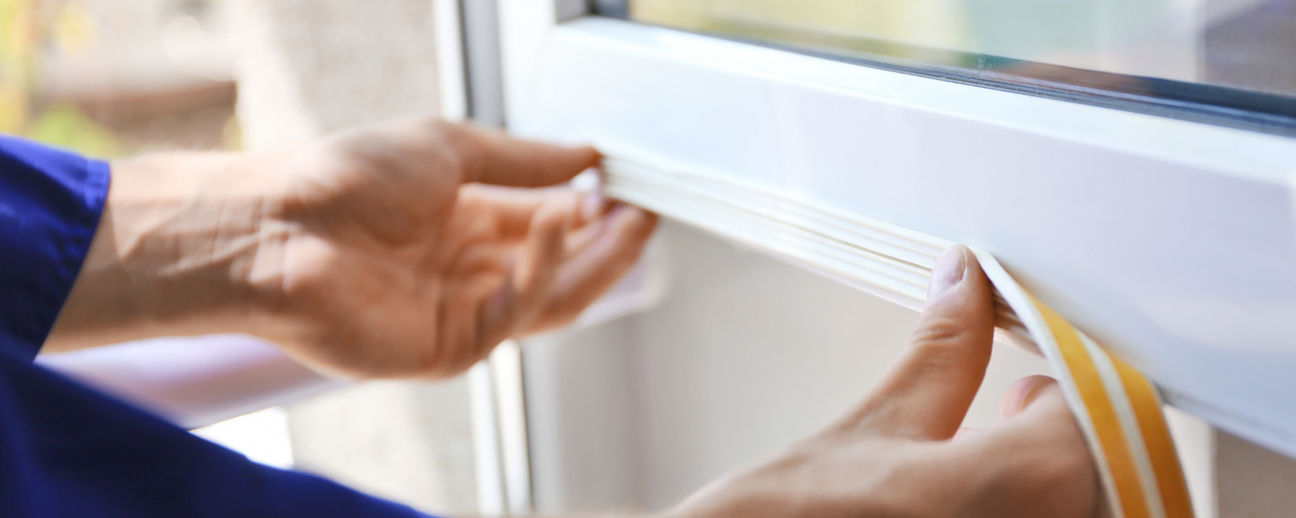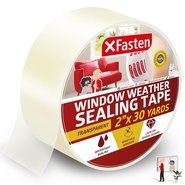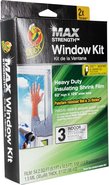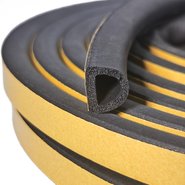Aug 6, 2025 • 5 min read
How to Insulate Windows Without Replacing Them

If your home feels drafty in the winter or overly hot in the summer, your windows could be the culprit. Windows are often one of the biggest sources of energy loss in a home, but you don’t have to replace them to make them less leaky. With a few smart upgrades, you can insulate your windows effectively and affordably.
In this guide, we’ll walk you through how to insulate windows without replacing them, using low-cost and DIY-friendly methods. Whether you're a renter or a homeowner trying to reduce energy bills, these solutions will help you create a more comfortable, energy-efficient home.
Table of Contents
What window insulation is and why it works
Window insulation refers to any method used to reduce the transfer of heat through windows. This means preventing warm air from escaping your home during the colder months and keeping cool air inside during the summer.
Methods for insulating windows typically involve sealing air leaks, adding insulating layers, and using heat-reflective or heat-retaining materials. Here are some of the top benefits of implementing these easy, low-cost improvements:
Reduced utility bills
Heat loss through windows accounts for 25-30% of residential heating and cooling energy use. Poorly insulated windows let warm air escape in the winter and allow unwanted heat in during summer, forcing your HVAC system to work harder to maintain a comfortable indoor temperature.
By improving your window insulation, you can cut down on wasted energy and see real savings on your monthly utility bills.
Better comfort and indoor climate control
Insulated windows help stabilize indoor temperatures, reducing drafts and eliminating hot or cold spots near windows. This means you can stay more comfortable year-round without constantly adjusting the thermostat.
Environmental impact
Better insulation reduces the need for using your heating and cooling systems, which in turn lowers your home's energy consumption and shrinks your carbon footprint.
Types of window insulation
There are several effective ways to insulate your windows without replacing them. Here’s a breakdown of the most popular and proven methods:
Weatherstripping
Weatherstripping involves applying materials like foam tape, V-strips, or felt around window frames to seal gaps where air can escape. It’s one of the easiest and most affordable insulation methods, ideal for double-hung or sliding windows.
- Best for: Windows that open and close regularly.
- Cost: Under $10 for most materials.
Window insulation film
These clear plastic shrink films create an invisible barrier over the glass, reducing heat transfer. Once applied with double-sided tape and heated with a hairdryer, the film tightens to form a smooth, insulating layer.
- Best for: Winter insulation; especially effective in cold climates.
- Cost: $10–$20 per window kit.
Thermal curtains or insulated drapes
Made from multiple layers of tightly woven fabric and sometimes foam, thermal curtains block drafts and reduce heat gain or loss. They can also dampen outside noise.
- Best for: Bedrooms, living rooms, or anywhere aesthetics and performance matter.
- Cost: $25–$100 per set.
Caulking and sealants
Silicone or latex caulks are used to seal gaps or cracks around fixed window frames. It’s a longer-lasting solution than weatherstripping for stationary windows.
- Best for: Permanently sealing cracks and air leaks.
- Cost: $5–$10 per tube.
Draft stoppers and window inserts
Fabric draft snakes or removable acrylic window inserts create temporary barriers against air infiltration.
- Best for: Renters or seasonal insulation.
- Cost: $10–$50 depending on product.
How much can you save by insulating your windows?
Insulating your windows doesn’t just improve comfort, it puts money back in your pocket.
- Energy savings: Homeowners can result in saving 10% on your annual utility bill, depending on your climate and the number of windows insulated.
- Return on investment: Most DIY insulation projects pay for themselves in a single season through reduced energy bills.
- Comparison to replacement windows: Replacing windows can cost $500–$1,000+ per window, while insulation solutions typically cost under $30 per window.
Window insulation usage and maintenance guide
Once your windows are insulated, it’s important to maintain those upgrades to keep them performing at their best. While many insulation solutions are low-maintenance, proper seasonal prep, regular checkups, and responsible disposal can extend their lifespan and maximize your energy savings.
Below are simple guidelines for when and how to install different materials, how to maintain them, and what to do when they reach the end of their useful life.
Installation and seasonal tips
- Before winter: Apply weatherstripping and window film in the fall before cold weather sets in.
- During summer: Use reflective foil or thermal curtains to block solar heat gain.
- Renters: Stick to removable options like draft stoppers, bubble wrap, and suction-cup thermal curtains.
Maintenance and upkeep
- Inspect weatherstripping for wear or peeling once a year.
- Reapply caulking if cracks form or the seal breaks.
- Replace window insulation film annually for optimal clarity and performance.
End-of-life and disposal tips
- Weatherstripping: Foam and rubber strips may be recyclable depending on local facilities.
- Insulation film: These items are not curbside recyclable. Check local drop-off centers or dispose of them in the trash.
- Thermal curtains: Donate or repurpose if no longer needed; many are machine-washable and long-lasting.
Recommended products for insulating windows without replacement
More easy wins for saving energy at home
Learning how to insulate windows is just one of many smart, low-cost steps you can take to reduce your home’s energy waste. Want to keep the momentum going? Explore our quick guide to home upgrades — from LED lighting to smart thermostats — that improve comfort and cut utility costs year-round. Ready for a deeper impact? Our complete home energy efficiency guide is packed with practical ideas for lasting savings.
Scope Zero’s Carbon Savings Account® (CSA) helps you take action on these goals. It makes it easier to choose, afford, and track upgrades like window insulation, efficient appliances, and more — all while lowering your bills and your carbon footprint.
Window insulation FAQs
What is the best material to insulate windows with?
This depends on your needs; window insulation film and weatherstripping are great for sealing drafts, while thermal curtains offer added insulation and light control. For a reusable, high-performance option, acrylic window inserts are also highly effective.
How do I keep cold air from coming in through my windows?
To block cold air, seal gaps with weatherstripping or caulk and cover the glass with insulation film or thermal curtains. These options prevent drafts and improve the overall energy efficiency of your home.
Can I insulate my windows myself?
Most window insulation methods are DIY-friendly and require only basic tools like scissors, tape, and a hairdryer. Many homeowners can complete these upgrades in under an hour per window.
Drive positive outcomes for your wallet, your home, and the planet
Scope Zero’s Carbon Savings Account® (CSA) helps individuals lower their cost of living by making home and personal transportation upgrades affordable and accessible. The CSA is a financial wellness benefit that reduces cost of living, drives environmental impact, and engages employees in sustainability.
Join our community
Sign up for our newsletter to stay up-to-date on all things Scope Zero.







 Platform
Platform







